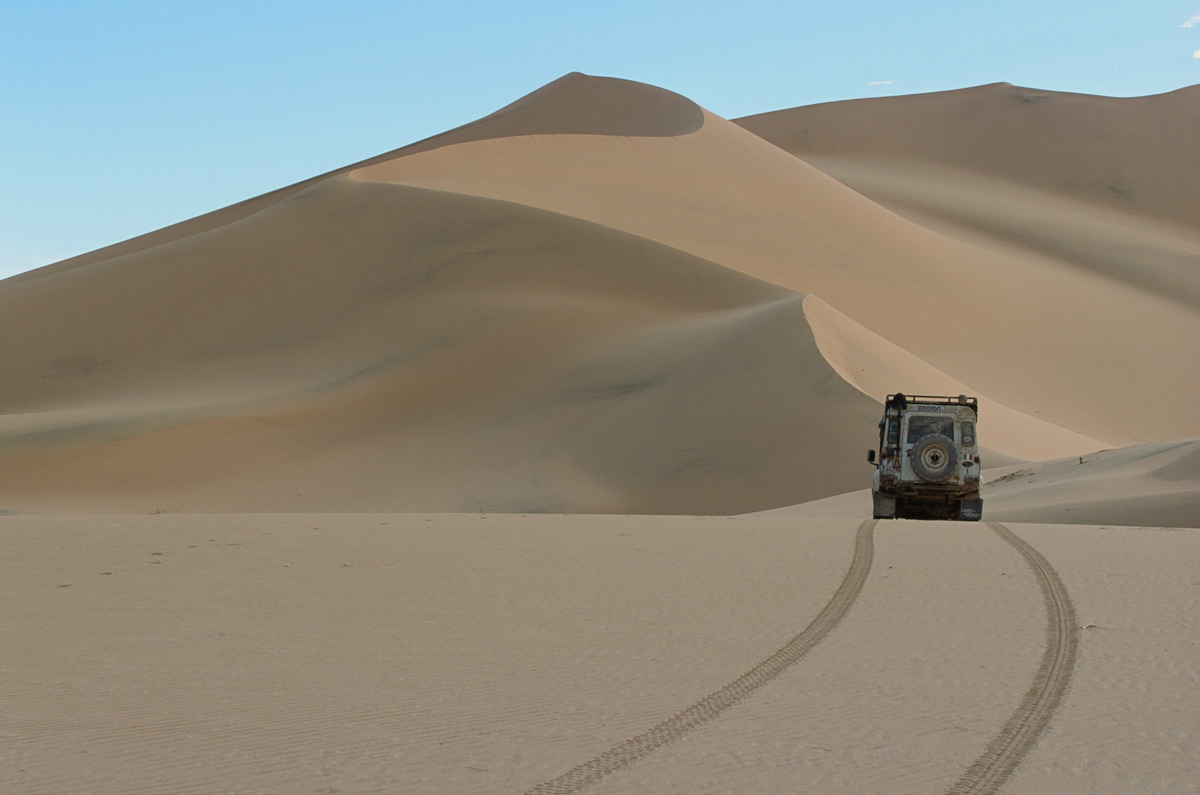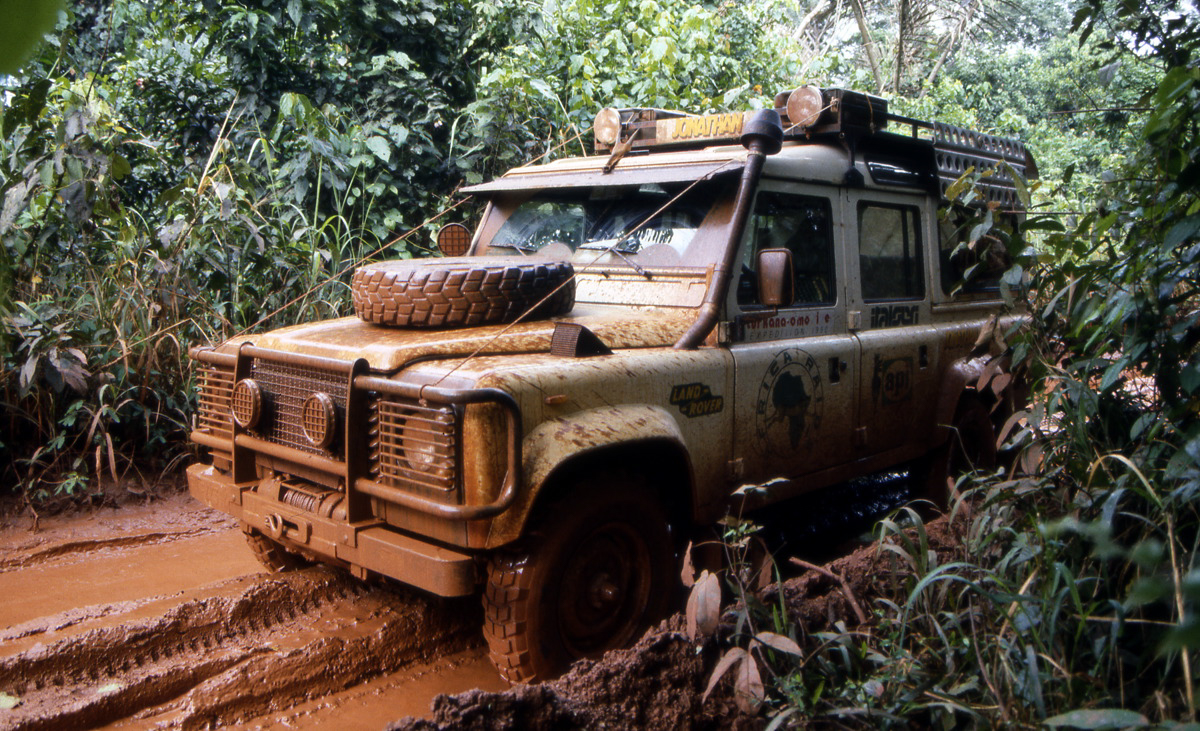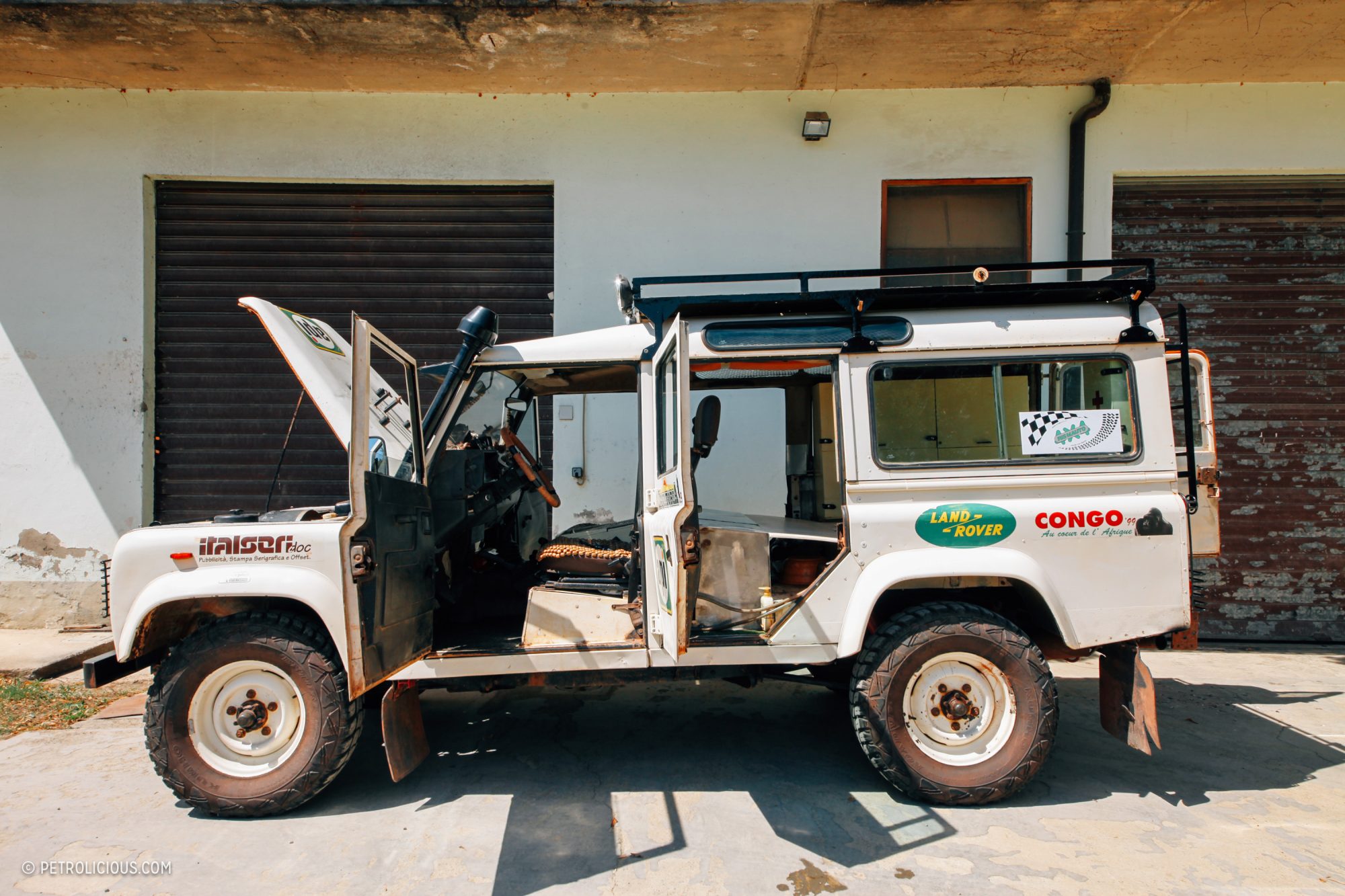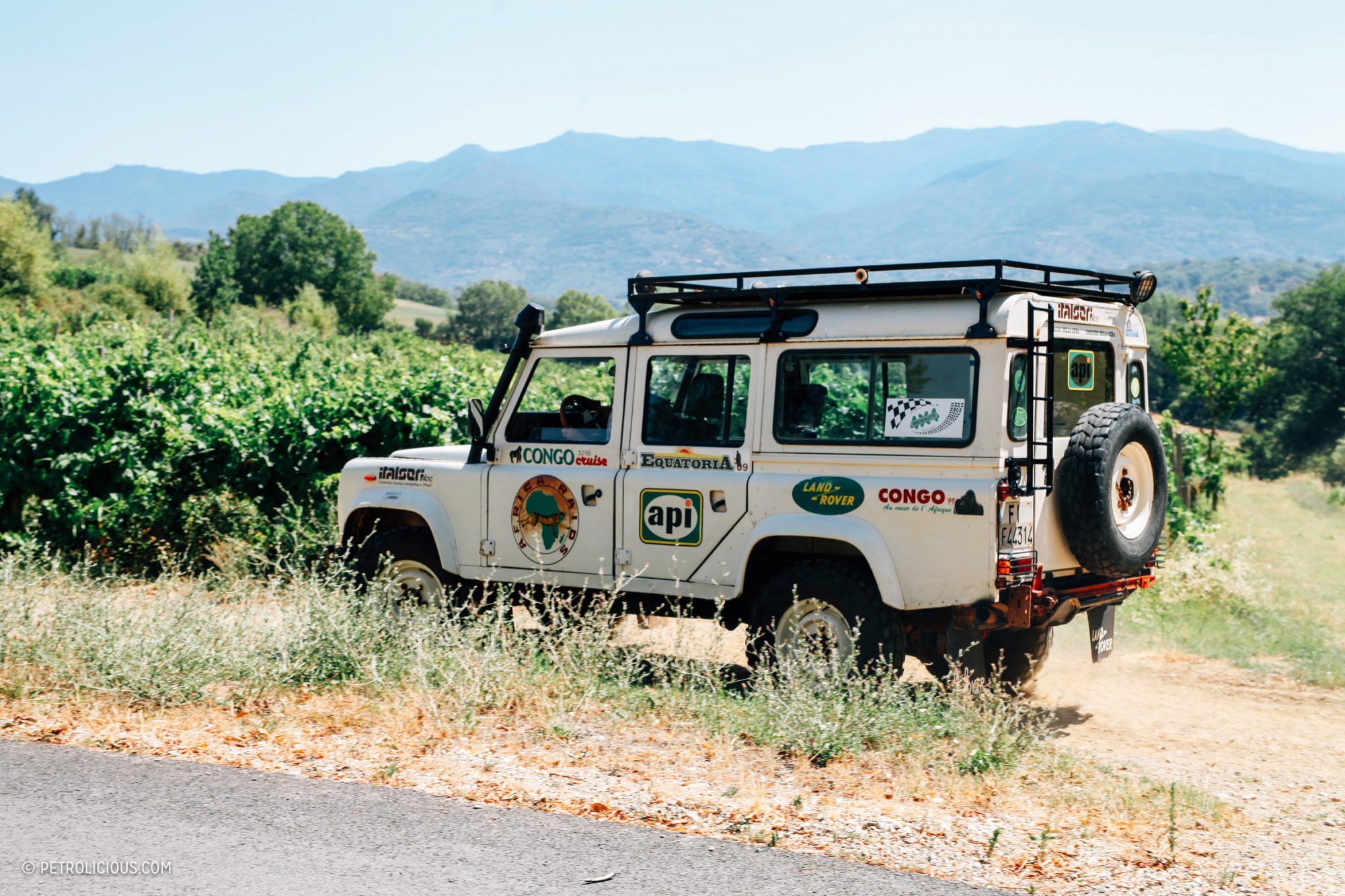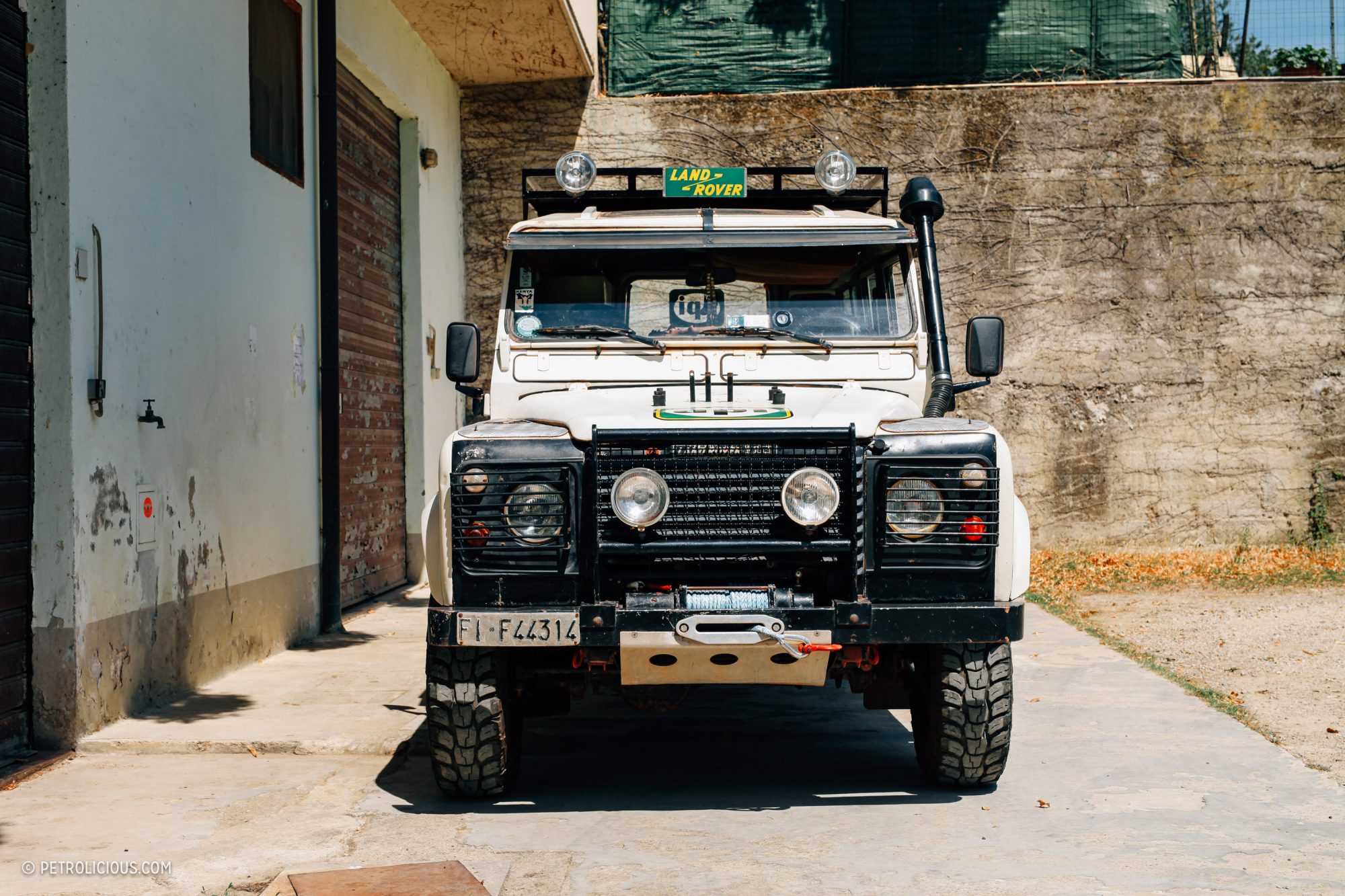
Africa photography by Moreno Torricelli // Italy photography by Marco Annunziata
Moreno Torricelli is a restless adventurer who’s been regularly exploring Africa for three decades and counting, always aboard the same trustworthy Land Rover Defender 110. “I saw Africa for the very first time from a boat that went up the Nile in 1983, and I couldn’t believe my eyes. I immediately decided that I wanted to go back and see the whole country,” he says.
“When I got back to Italy, I began to read everything I could find about this brand new world. In particular, I was interested (and I’m still) in the travel memories of the mid-nineteenth century explorers who ventured into Africa, just to name a few: Antinori, Piaggia, Bottego, Barth, Cameroon, Spike, Burton, Savorgnan, Livingstone, and Stanley. While I was reading their words, unconsciously I was already imagining living them.
“I do not want to define my passion and interest in Africa as a sick obsession,” Torricelli points out, “I would say that Africa is always there in my thoughts, and simply thinking of returning there comforts me.”
When he decided to visit Africa in his own way, Torricelli decided to entrust the locomotion to a Land Rover, a brand that has been present on the continent for many years for all sorts of good and unsavory purposes alike, and after thousands of kilometers through terrain from jungle to desert, he’s never regretted the choice of his Defender 110.
“This has always been my only off-road vehicle. For big raids, I think the Defender 110 is just the perfect machine. I bought it brand new from the Land Rover dealer in Florence, Italy, which delivered it to me in February 1986,” Torricelli reminisces.
Before his travels, he worked as a race car mechanic when he was a young man, and he knows engines and mechanicals quite well as a result of his early trade—the kind of person who pops a hood and actually knows how to trace and solve the problem—and he has personally made all the changes on the Defender to prepare it for his excursions.
Torricelli puts his modification process in simple terms: “Every time I came back from Africa, I added something it was missing, paying attention not to add anything superfluous simply because what you don’t bring with you, won’t break!”
Thanks to the equipment he’s installed, the Defender is able to travel more than 3000km on paved roads, and about 2000km off-road, he estimates. On the exterior, Torricelli’s added a self-built roof rack with a ladder, folding table and chairs, two aluminum grips, a mount for a jack and one for a shovel, a semi bull bar, a winch, additional lighting, a sun visor (simple but crucial!), two spare wheels, and two spare gas cans. Inside he’s fitted a 220-liter gas tank behind the front seats, a 70-liter gas tank under the passenger seat, a 70-liter water tank in the rear right wheel well (all of these tanks are operated by electric pumps), two wooden storage boxes for food and tools, a cabinet for clothes and another containing the kitchen, first aid kit, air compressor, and a 100A battery.
As you can see in our photos, there’s no tent on the roof. “I sleep inside the car for safety reasons. I always want to be ready to turn on the engine and drive away from possible risks, including but not limited to the often dangerous wildlife. When it’s too hot to sleep inside the car, I do have a small tent that I put on the roof if I have to, but I don’t use it too often.”
Torricelli has never had a sponsor for his adventures. In over 30 years of consistently traveling the continent, he always had to pay for everything, sometimes his friends gave him some tools or spare gear or helped him with some of the setup, but by and large this is a one-man show. But that’s never phased him, and his trips have even helped to fund the next ones sometimes, with Torricelli using the money from selling his photographs to travel magazines.
“I’ve never attended photography classes,” he tells me, “What I know I learned from books and magazines, the beauty of Africa itself, and of course by making some errors. I’ve always been inspired by the work of Leni Riefenstahl, Yann Arthus-Bertrand, Michael Nichols, Steve Bloom, Carsten Peter, Angela Fisher, and Frans Lanting, to name a few.”
In November 1991, a friend of Torricelli’s from Piacenza was driving the Gilera support truck for the Paris-Dakar, and knowing of his friend’s travels in Africa, suggested that Torricelli attempt the famous rally raid as well, driving the truck of the Piacenza-based company, Astra.
“They were willing to pay all the expenses because they were left at the last minute without a second pilot, and since at that time there were people willing to pay good money to participate in this competition, I accepted. In that edition, the arrival was in Cape Town in South Africa going through Chad and Angola, two places that are not easy to access and that I had not yet seen.
“I do not have a very positive memory of that experience, there was a lot of improvisation in the organization and they took way too big of risks (three pilots died that year). No time for rest, everything was too fast with no time to enjoy the scenery or meet the locals. Also, we never made it to Cape Town, as a series of mechanical problems to the truck ensured we arrived too late to board the organizer’s ferry at Pointe Noire in Congo that had to bring us to Angola, which happened due to of Zaire’s refusal to let the race pass through its territory.”
As you might have guessed by that account, Torricelli has done the majority of his travels alone, for many reasons. As he puts it, “I travel alone because after a few years of traveling with some friends, I had enough confidence in myself and my Defender to do it solo, and I have carefully prepared the Land Rover before every departure since the first trip.
“Being alone means having great self-confidence and complete trust in the vehicle,” he continues, “You can work on your schedules and routes, you can go very far in just one day or stop for a long time in one place, you do not have to discuss what to do with anyone, you are much quicker in making decisions, and ultimately you do and see more. Also, if there should be a mistake along the way, I’ll be the only one to pay the consequences.
“When you travel alone, you have to relate to the locals who speak another language, and it is not easy to understand and be understood. The travel experience is undoubtedly more intense, but I prefer it this way. Another important thing is that when I move around alone in my car I am less noticed, and this is very important especially when I have to go through risky areas or when I arrive in an isolated village—my presence will not change the routine of the inhabitants like a group of visitors would, and everything is more ‘real’ because of this. At the same time, traveling alone exposes me more to the risks of common delinquency, especially in big cities. I never had this kind of trouble in small villages, in the forest, or in the desert, but a lone traveler can be a target in larger cities. Another problematic situation can occur in the case of mechanical failure of the vehicle or an accident that causes physical injury—in isolated areas, it is obviously not ideal to deal with such things by oneself.”
Although his travels could fill multiple volumes, Torricelli shares a small handful of memories to share with me during our chat. “For example, in 1988, in Niger, I was driving on a flooded track with very deep holes. The Defender’s engine had sucked up some water from one of these and stopped running. I understood immediately that the damage was serious, and I started to disassemble the engine to understand the extent of the problem. I found that three, maybe four connecting rods were bent and that I was essentially stuck, couldn’t do anything more. So I waited for someone to pass. After several hours, a truck arrived and took me to the nearest village. I was lucky that there was a blacksmith in the village who had the rudimentary equipment to weld, so with his torch, we cut the connecting rods and then dismounted everything. With just one good rod I waited for someone to take me to Zinder, a town on the border with Nigeria 200km away, where I managed to find the other three connecting rods from a carcass of a Defender 109. I then returned to the village and fixed the damaged pieces. After four days I was back on the road to Cameroon.
“Another time, in 1999, in North Kivu, Congo, I was finding my way to get to the remote Garamba park to see the white rhinos, of which there were about 30 specimens remaining in the world. The area is dangerous without much control, with poachers and military stragglers from Sudan infesting this forest, killing the animals, and looting the villages. I had been driving slowly through big holes filled with mud for hours when suddenly on both sides of the track, hiding in the foliage, I saw a bunch of men wearing military camouflage fatigues, heavily armed with machine guns pointed at me. I didn’t stop to think too much about this predicament, and I continued to accelerate with my heart in my throat. In those eternal seconds, I wondered when I would have heard the first shot.”
Torricelli went on to tell me that he’s often thought about that day, and he likes to believe that despite his preference for going it alone, that there was someone with him in the car who protected him during that moment. Among the most beautiful and intense memories, he also recalls riding on a barge for 1200km down the Oubangui and Congo rivers with the Defender, living with the Dinka tribes in South Sudan, the magnificent spectacle of the Archei gorges in Chad, crossing the equatorial forest in Zaire, the wild beauty of the Danakil Desert, and a close encounter with gorillas among the many instances of his path crossing with African wildlife.
Thirty years after his first trip to Africa, Torricelli has conceived and completed more than 20 trips across the continent, visiting 47 of the 54 African nations, covering 280,000km, always aboard his trusted 1986 Land Rover Defender 110, which—despite some on-the-fly fixes, has never failed to help him complete his planned routes across the often unforgiving landscape.
And Torricelli is far from done with his explorations, telling me that he will go back to Africa soon. On his last trip, he arrived in Brazzaville, Congo, where he applied for an entry visa for the Democratic Republic of the Congo. He had made the same request in Rome, Italy before leaving, and in Yaoundè during the trip, but it was always refused for reasons of internal security, so after many days of waiting he decided to give up for the time being.
“Unfortunately, the political situation there is difficult, and there’s always some risks of a civil war, but I will go back. Once I enter the Congo I plan to put the car on a boat and travel upstream for 1750km to Kisangani in the east of the country, an extraordinary river trip that I have had in my head for years, and that I hope I can do as soon as possible.”
In the meantime, Torricelli keeps fit and drives his Defender in areas as far away from cities, towns, and asphalt roads as he can get. He frequents the mountainous areas of Abruzzo and Calabria, and he can also be found close to where he lives in Tuscany, in the ancient woods of Casentino. Before we part ways, Torricelli lends his advice for those who want to drive off-road without doing damaging nature, something he is very careful about: “Please stay on the designated paths, and when it’s possible, go to the mountains and valleys when the tracks are dry, in this way you will leave way fewer traces of your passage.” It’s important that the remains of your journey are your memories, not a mess to be cleaned up after you’ve gone. Perhaps there are some in Africa who remember a muddy Land Rover passing through their town as Torricelli headed off to his next adventure.









